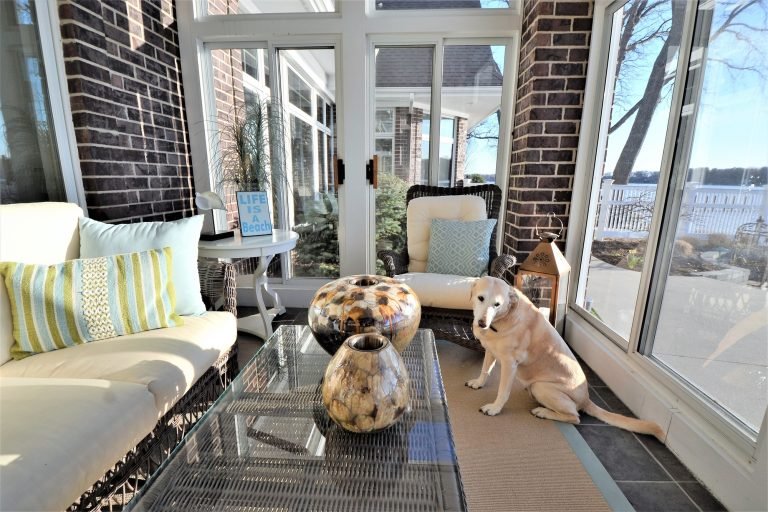There’s something magical about a sunroom. It’s the one space in your home where time slows down just enough for a second cup of tea, a spontaneous nap, or a late-afternoon book binge. But too often, these dreamy glass-encased rooms become too hot in the summer, too cold in the winter, and too forgotten during everything in between. That’s where smart design comes in.
If you’re thinking of building a sunroom or reviving one that’s lost its charm, the key is creating a space that feels just as inviting in July as it does in the middle of a rainy November. Here’s how to make your sunroom a true four-season sanctuary—with no seasonal hibernation required.
1. Orientation and Natural Light: It’s All About the Angles
Before you start picking out furniture or pining over Pinterest boards, look at your sunroom’s orientation. A north-facing sunroom will get more even, diffused light year-round, while a south-facing one will bask in warmth during winter but may turn into a sweatbox in summer.
East-facing rooms catch the golden morning sun—great for early risers—while west-facing ones give you that glowy late-daylight. Depending on your region’s climate, you might want to counterbalance heat gain with reflective window treatments or heat-absorbing tile floors. The sun is your best friend here—but only if you know how to live with it.
2. Don’t Skimp on Insulation (Even in a “Glass Room”)
People often assume a sunroom can’t be insulated because of all the windows. But you’d be surprised. Double- or triple-glazed windows with low-emissivity (Low-E) coatings help trap heat in the winter and block it in summer. Floor insulation and insulated wall panels (yes, even slim ones) can make a world of difference in thermal comfort.
And while we’re at it, seal up those sneaky drafts. A drafty sunroom is just a fancy icebox come June or July. Weatherstripping, caulking, and insulated ceiling panels are key here. It’s not flashy. It’s just smart.
3. Use Flooring That Plays Both Sides
Flooring in a year-round sunroom has to be a bit of a shapeshifter. It should handle cold toes in winter and barefoot lounging in summer. Ceramic or porcelain tile with radiant floor heating is one of the most effective combos. It holds heat well, is easy to clean, and doesn’t mind a little sun exposure.
If you’re craving something softer, consider engineered wood or vinyl flooring that mimics natural materials but doesn’t warp or fade as easily. And always add a rug or two—they’re like woolly socks for your room.
4. Heating and Cooling Without Making It Weird
No one wants to feel like they’re sweating inside a greenhouse. And you shouldn’t have to layer up like you’re going camping just to enjoy your sunroom in winter. A ductless mini-split HVAC system is an efficient way to heat and cool your space without needing to overhaul your existing system.
Ceiling fans (with reversible blades for seasonal air flow) can help regulate temperature too. And if your sunroom is already part of your main HVAC system, make sure those vents are properly balanced and insulated. No one likes an overheated corner, while the other side feels like a freezer aisle.
5. Windows and Doors That Actually Work for You
Your windows and patio doors are doing the heavy lifting here—so give them the tools to thrive. Opt for windows with built-in UV protection and easy-open mechanisms for ventilation. And those doors? They’re not just an entrance. They’re part of the room’s soul.
Sliding or French patio doors should seal tightly, operate smoothly, and let in as much light as possible without compromising insulation. If you’re not sure where to start, look for great patio doors here—the right ones will completely change how your sunroom lives and breathes.
6. Think Beyond Summer Decor
It’s tempting to fill a sunroom with light, airy, beachy decor, but that vibe doesn’t always translate when it’s gloomy and 5°C outside. Think of this room like a mood ring: it needs to flex. Add texture through layered fabrics—wool throws in winter, cotton ones in summer. Include a few mood-shifting pieces like candles, books, and art that feel relevant in all seasons.
Use indoor plants that can survive year-round (snake plants and pothos are warriors) and lighting that can switch from bright to soft depending on the time of day or season. Dimmable overheads and warm table lamps are your best friends once the sun clocks out early.
Final Thoughts: Make It a Room You Want to Be In
The whole point of a sunroom is to give you more life. More moments. More comfort. So make it a place that welcomes you, no matter the month. Whether it’s snowing outside or blazing hot, a well-designed sunroom shouldn’t feel like an afterthought—it should feel like a second heartbeat to your home.
So layer it, insulate it, open it up, cool it down. And most importantly, live in it. Year-round.


































